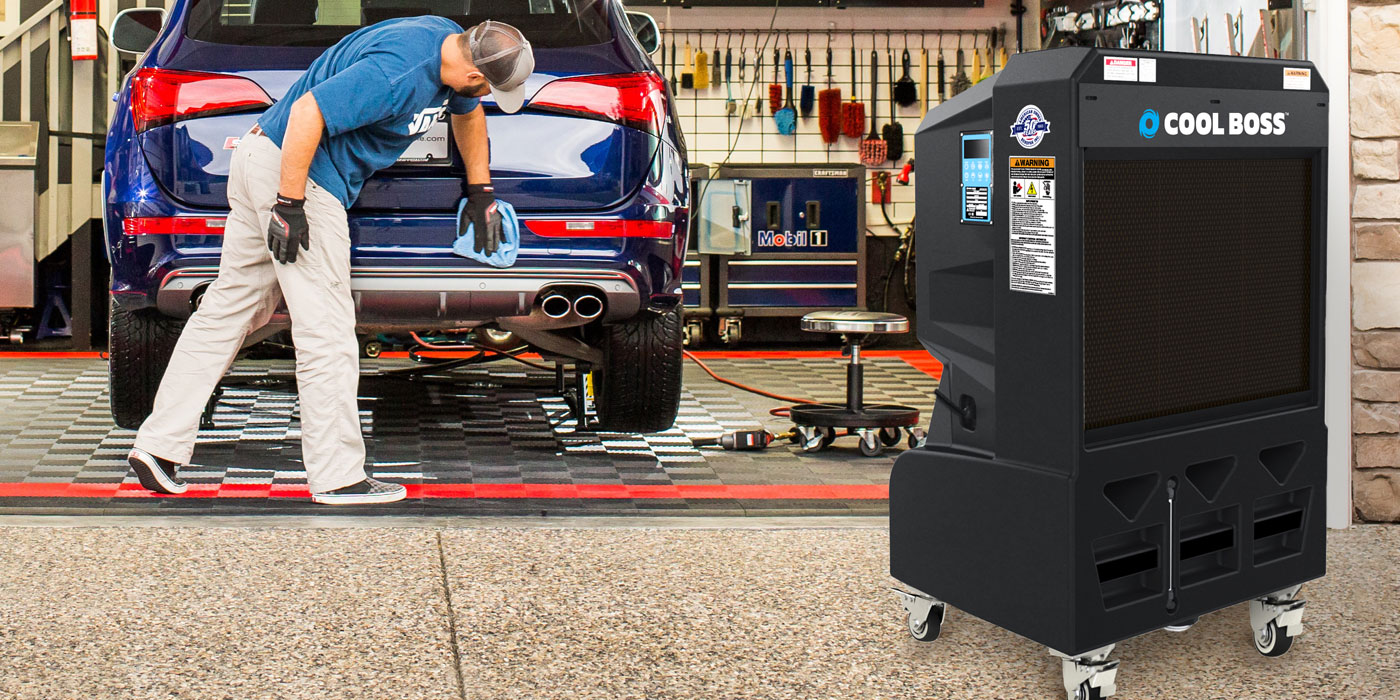Electricity and water. Two essentials vital to your car care business. Both are expensive. But, both can be delivered and used in less wasteful ways. Today, when it comes to saving electricity and water, it’s not just about being environmentally friendly. Of course, being known as being “green” is a great marketing tool and should be promoted on your signage and in your ad campaigns, it’s really just an added bonus because saving electricity and water will also save you money, even if at first you have to spend money on new items and equipment. The potential return on investment is estimable.
LED lighting
According to Minda Matthews-Smith, the director of marketing for LSI Industries™, LED technology is evolving every day. The overall performance is improving, costs are coming down, and more applications are being addressed. “In addition,” added Matthews-Smith, “people are starting to look more at combining controls with their LED lighting so to recognize even greater energy savings.”
The life of an LED fixture can be more than 60,000 hours, said Matthews-Smith, which is five to 10 times longer than traditional lights. “This obviously has a tremendous impact on maintenance costs. LED lighting can be produced as a sealed fixture which means moisture isn’t an issue. “
Matthews-Smith said at LSI, they are building fixtures with sealed optic units, which means the LEDs, circuit board and driver are in a sealed, protected environment behind a tempered glass lens. “LED fixtures are environmentally-friendly so you don’ t have to be concerned with things like mercury, lead and so forth like traditional lamps thereby reducing hazardous chemicals like mercury,” she added.
In regards to a carwash, Matthews-Smith said to look at the overall fixture to make sure it will stand up to that environment, not just the LED light source. “You also have to be very careful where you install the fixtures and how you protect them given the corrosive materials used in the carwash tunnel. With a lot of direct contact the corrosive materials can affect the paint, metal and seals used in a fixture. With this in mind, we don’t use rubber gaskets in our LED fixtures any more,” she said.
Everywhere you turn you see information about LED lighting and a lot of people think all LED products are the same. Not true at all…they differ a great deal depending on who is building the fixture. Also, a lot of LED products are not tested. It is really important to partner with a solid company that understands the technology and lighting products.
What’s the ROI?
As for the return on investment, Matthews-Smith said they figure on average, you will see a savings within three years, depending upon the applications, it can be significantly less that that.
Along with the energy savings, a few other reasons to consider LED lighting, according to Matthews-Smith, include the fact that they look great and produce a very crisp, white light which makes an environment look very bright and clean.
Variable Frequency Drives (VFDs)
Variable Frequency Drives (VFDs) clearly provide carwashes the potential for significant energy savings, enhanced equipment control for better performance, peak demand mitigation and substantial reduction of wear and tear on motor driven systems, according to Jim Belanger of Car Wash Management Integrators LLC. But, added Belanger, they are not a silver bullet and improperly applied or programmed VFDs result in a complete waste of money for the owner.
“They have the potential to provide tremendous economic returns in the form of reduced power bills and enhanced operational efficiency and effectiveness and should be strongly considered by every carwasher. A thorough understanding of how to match the VFD to the driven load is the key to a successful application,” said Belanger. “When applied properly, the VFD is the most effective motor controller in the industry today. Modern VFDs are affordable and reliable, have flexibility of control, and offer significant electrical energy savings through greatly reduced electric bills.
Motor driven systems consume approximately 80 percent of carwash energy, according to Belanger. Variable flow applications from centrifugal loads, such as fans and pumps (dryer fan motors, water pump motors, vacuum pump motors and air compressor pump motors) offer the greatest energy savings potential. “VFDs offer the greatest opportunity for energy savings when driving these loads because horsepower varies as the cube of speed and torque varies as square of speed for these loads,” he said. “For example, if the motor speed is reduced 20 percent, motor horsepower is reduced by a cubic relationship (.8 X .8 X .8), or 51 percent. In other words, use VFDs to run your systems slightly slower and generate huge savings.”
If big savings, enhanced control and optimized performance weren’t enough, Belanger suggested other motivating reasons to design VFDs into your carwash operation:
- VFDs are the best way to mitigate demand penalties in your electric bill. VFD’s control the inrush current peaks 80 percent better than cross the line motor starters and 50 percent better than soft start motor starters. If you are getting nailed with demand penalties, then you may have all the reason you need to convert to VFD motor control.
- Starting a motor using an across the line starter increases stress on mechanical systems. Belts slip and squeal, chains jump, and high pressures develop in pipes. VFD motor control inherently offers soft starts and soft stops which reduce mechanical stress on systems and lengthens their productive lives, helping to reduce the overall long-term cost of equipment ownership.
- The federal government and many local utilities are offering incentives and rebates to install energy efficient devices like VFDs which take some of the sting out of the capital expenditure required upgrading your facility or in new project design. VFDs are also known as adjustable speed drives (ASDs) or variable speed drives (VSDs), so don’t overlook them when you peruse the DSIRE website, which is a comprehensive source of information on state, local, utility and federal incentives and policies that promote renewable energy and energy efficiency; www.dsireusa.org.
What’s the ROI?
A VFD solution is 40 to 50 percent more upfront than traditional motor starters, Belanger stated. ”Since basic motor control is required, the additional amount to get to VFDs is the investment that needs to deliver acceptable ROI. When VFDs are used aggressively as part of an overall marketing strategy that influences the customer’s experience.”
The payback? It takes about 12 to 24 months. “Less aggressive implementation strategies deliver longer payback periods,” Belanger stated. “See the case study below which offers an actual side by side comparison of a carwash using traditional motor starters and a wash using an aggressive VFD approach. The data is quite compelling and corroborates the 12 to 24 month payback from VFD motor control.”
Case Study of Electrical Usage:
A side by side comparison between Hilltop Car Wash TN and Car Wash Clinic #1 TN; actual data provided in picture at bottom.
Hilltop Car Wash ― Motor Starters Car Wash Clinic #1 ― VFD
|
|
|
|
|
|
|
|
|
|
|
|
|
|
|
|
|
|
|
|
Hilltop Car Wash charged 11.7 cents/kwH. Using motor starters instead of VFDs Hilltop Car Wash spent $1,539.48 too much for power during the test period.
30,600 kwH used
x
43% missed savings
13,158 too much kwH used
x
11.7 cents / kwH
$1,539.48 too much power bought
Annualized savings for Hilltop Car Wash based on the test period equal $18,473.83 if VFDs were deployed instead of motor starters. In this case, the payback would have been 12 to 15 months.
Water, water…it’s everywhere
By Mike Simmons, Contributing Writer
Vital to the human body, the earth's surface, and the carwash industry, water is the elemental carwash imperative. We heat it, spray it, combine it with solvents to do the job of washing cars. In our business, as in life, water is everything. It makes sense, then, to investigate products and practices to treat our water well … to recycle and reuse it … to make it a sustainable resource.
Carwashes are the "greenest" way to keep a car clean
The industrial components in a carwash system ―high pressure nozzles, sanitary sewers, controlled water usage ―make our services more environmentally sound than an at-home do-it-yourselfwash. And investing in efficient carwash systems increases capacity, quality and profitability by reducing usage, expense and waste.
Reclaiming carwash water
Recycling runoff water through a series of filtration and treatment systems is one method for reducing water usage, which can be especially appropriate in drought-prone regions. Recycled water is typically used in the early rinses mixed with detergents. Proper chemistry and balanced filtration are critical to an effective reclamation system.
Start with pure water
Purified, or "soft," water helps reduce energy, maintenance and hardware costs. Free of pipe-clogging sediment and debris, pure water provides better quality cleaning results which, in turn, encourage and attract more business.
Why hard water hurts profits
Water, the "universal solvent," dissolves more substances than any other liquid, which means it carries along every chemical, mineral or nutrient in its path. Water with an appreciable quantity of dissolved minerals ("hard" water) can lessen the effectiveness of cleaning agents and shorten plumbing life. When heated, the minerals from hard water precipitate out and form a scale in pipes, narrowing and possibly clogging them. Scaling in a boiler system prevents efficient heat transfer, thus increasing energy demand (and fuel costs) to produce hot water.
Untreated, over time, hard water can seize up a carwash system like a heart attack.
Reverse osmosis (RO) rescue
Simply put, an efficient filtration system eliminates the damaging and costly effects of hard water. Reverse osmosis systems remove about 90 percent of the impurities in water which contribute to corrosion and scale deposits; they help make water more compatible with cleaning solutions, and produce a clean, spot-free rinse to make your facility's services shine.
Invest in a high quality reverse osmosis system for top returns and the best value. You want stainless steel valves and fittings, which protect against corrosion, and the most accurate flow rates for greatest efficiency. Look for extra low energy elements, which operate at less than half the operating pressure, and fiberglass membrane housings which have a higher resistance to varying feed water conditions and chemicals.
Custom systems, with expansion options, offer long-term value.
Hard water regions
Geography and industry contribute to the naturally-occurring mineralcontent in water. More than 85 percentof American homes have hard water. The softest waters are found where mountain lakes and snowmelt provide the water supply, such as in New England and the Pacific Northwest. The hardest waters are found in Texas, New Mexico, Kansas, Arizona and Southern California.
Regardless of your location, water testing is a simple preventive measure to determine water quality. Don't wait for system failures to alert you to hard water hazards. Some companies offer free water testing. Ask a carwash professional or the author for options.
Mike Simmons, Vice-President of Sales at Carwash Boilers, Inc, brings 13 years of water treatment expertise from Ionics, the largest water purification company in the world, to the carwash industry.














